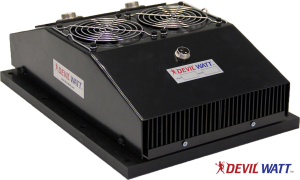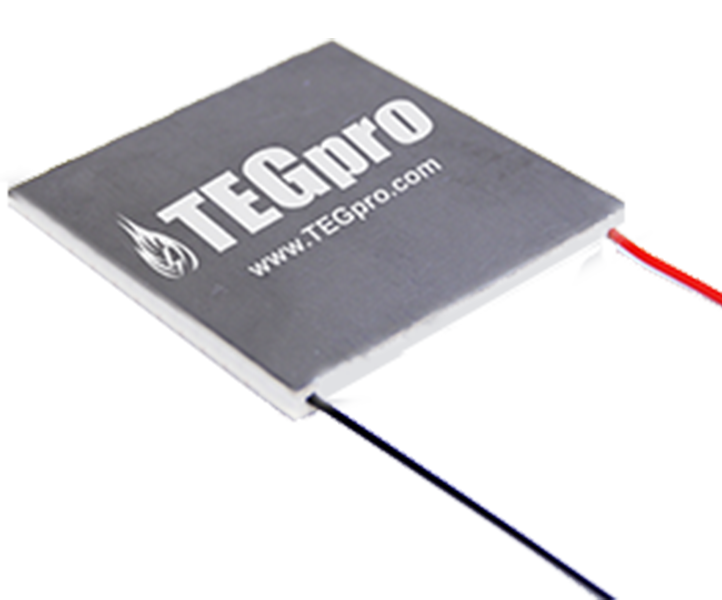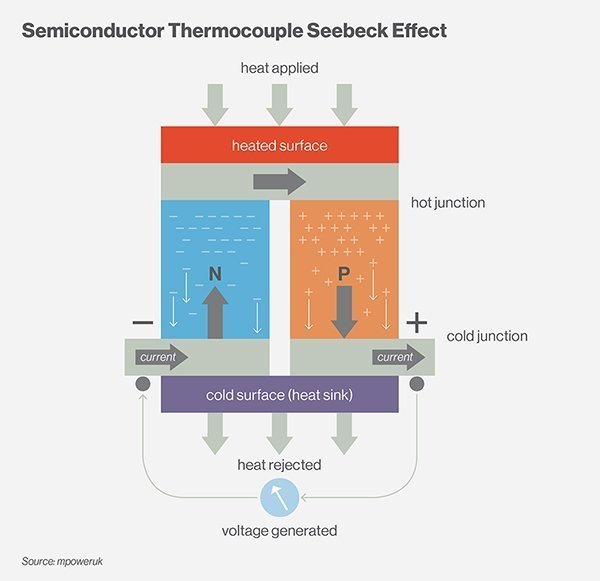Home
Designs
Physics
Chemistry
Mathematics
Testing
Gallery
About Us
Seebeck Effect Simulator
The Physics Behind Our Flashlight
How Does Our Flashlight Work?
For our flashlight, we will include a Thermoelectric Generator that converts temperature differences into electric voltage using a DC (Direct Current) power source.
In a Thermoelectric Generator, there is a Thermoelectic Module, which is where the Seebeck Effect occurs.
The Seebeck Effect helps generate the voltage. This voltage along with the current can produce power at a load.
The Seebeck Effect occurs due to a movement of charged carriers (particles that move freely and contain charge) within this semiconductor.
The Seebeck Effect
It is the production of an electromotive force.
As a result, there is an electrical current in a loop of material which consist of two dissimilar conductors or semiconductors when one junction is heated and one junction is kept cool.
However, the voltage that is produced by this effect is very small. (A few microvolts).
If the temperature difference between the two junctions are large enough, there might be a millivolts that can be produced.
Inside a Thermoelectric Module, many P-type and N-type semiconductors can be connected in series to increase the output voltage or connected in parallel to increase the deliverable current.
Semiconductors (In the Seebeck Effect)
There is a n-type semiconductor, a p-type semiconductor and a metal that connects the two semiconductors in series.
Within the n-type semiconductors, there are negatively charged carries which are electrons. N-type semiconductors are pentavalent. (5 electrons in its outermost orbit).
Within the p-type semiconductors, there is a hole because p-type semiconductors are trivalent (3 electrons in its outermost orbit). However, it lacks one valence electron in order to become a typical semiconductor.
Explaining the Process For How The Flashlight Works
When heat is applied, the heated electrons at the n-type semiconductor recieve this thermal energy.
These heated electrons flow from the hotter junction to the cooler junction.
The hotter end has a lower density of charge carriers, which are the electrons of the n-type semiconductor and the holes of the p-type semiconductor.
The cold end has a higher density of charge carriers.
As a result, this distribution of charge carriers results in an electric field that is produced.
Therefore, when a conductor connects the two ends of the junctions, charges begin to flow which form an electrical current.
Advantages of A Thermoelectric Geneator (Which uses The Seebeck Effect)
- Quiet
- Eco-friendly (No Greenhouse Gases)
- Reliable
- Wide range of fuel sources
- Varies in size (Compactable). Thus, it can be used in different designs
- Direct Energy Conversion
- Able to operate under high and zero gravitational Force
- Varies in orientation
- Scalability - It can produce an output of a wide range of power levels.
Figure 1: The Thermoelectic Geneator

Figure 2: The Thermoelectric Module

Figure 3: The Seebeck Effect






